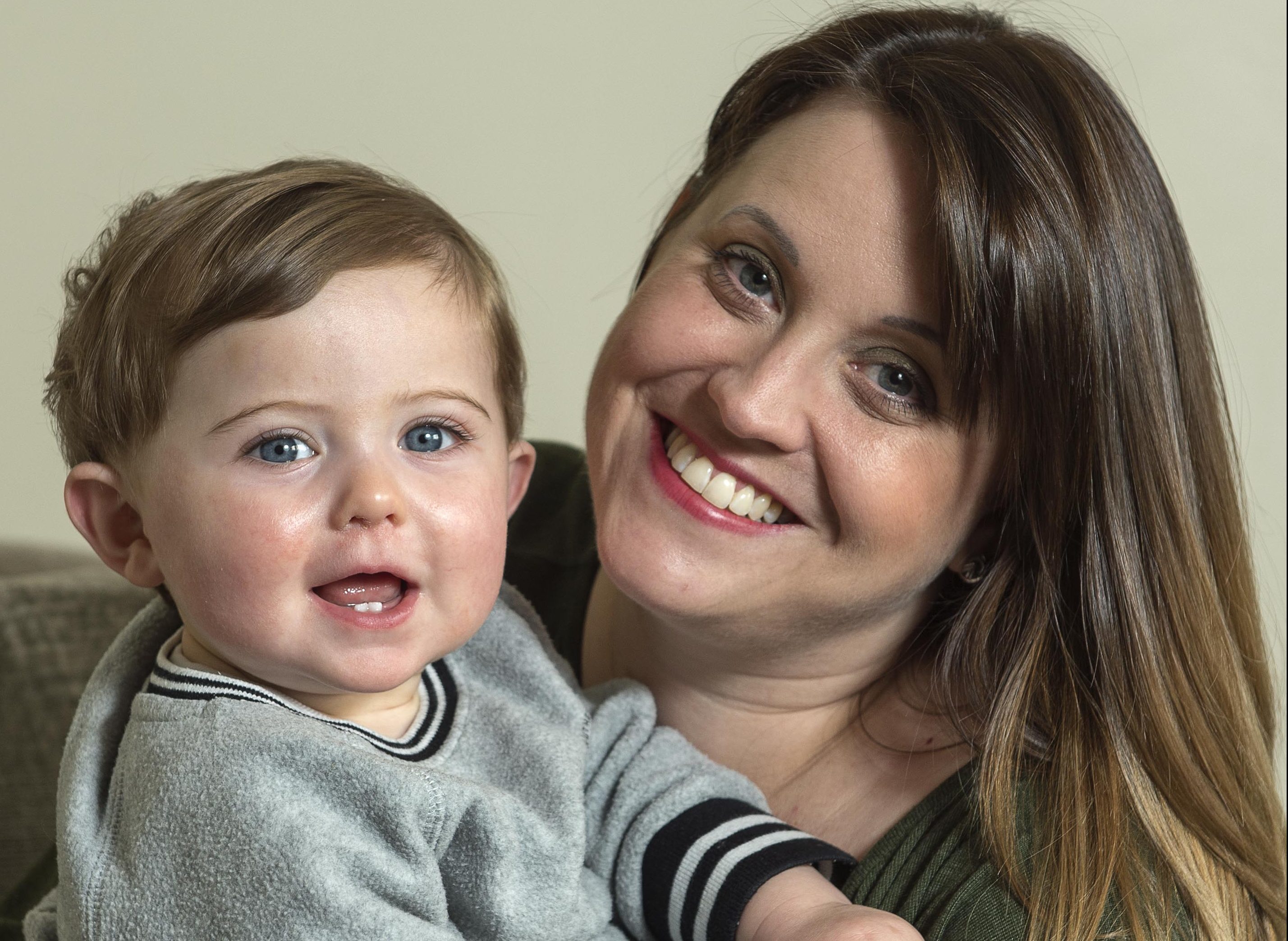
NUZZLING little Lucas, young mum Katie Holly Edwards looks back on his delivery and can’t believe she survived.
Her bouncing bundle of energy was delivered by caesarean section nearly a year ago.
But Katie Holly suffered an increasingly common birth complication, leaving her haemorrhaging so badly she was left with only half a teacup of her own blood in her system.
Doctors say the risk of the condition she had, placenta percreta, is linked to mums who have repeated C-sections.
The life-threatening condition is caused by a woman’s placenta continuing to grow and can eventually cause the womb to rupture.
As a result of the complication, it’s not uncommon for women to lose staggering amounts of blood during delivery, with some requiring more than 40 pints to keep them alive.
In the case of Katie Holly, she had to have a massive transfusion to survive.
Doctors also had to resort to hooking her up to a system which transfused her own blood back into her, to keep her from dying.
“It has taken me almost a year to recover from the nightmare of almost dying and leaving my children motherless,” said Katie Holly.
“I suffer from post-traumatic stress with flashbacks to the ordeal.”
What should have been a happy memory – one of life’s unforgettable days – quickly turned to horror for Katie Holly, of Kinloss, Moray.
The mum of Phoebe, 14, Tamzin, 11, Trystan, 9, and Olivia, 7, was well versed to the maternity unit routine.
All four of her previous deliveries had been by caesarean, so she was expecting the delivery of Lucas to go as smoothly as those.
But it quickly became clear there was to be nothing straightforward about this birth.
A routine scan at 20 weeks had revealed her placenta had grown out of her womb wrapping itself around her bladder like a tree.
Despite this, she felt confident everything was going to be fine, placing her trust in the medical team around her.
But she haemorrhaged so badly she had only half a tea cup of her own blood left in her body, following Lucas’s delivery.
“Removing the placenta took an eight-hour surgery and caused the massive blood loss,” she said.
“I was rushed to intensive care afterwards with my life in the balance. But, as quickly as blood was transfused into me, I would lose it again.
“The medical team even set up a blood-saving device to collect my own blood and transfuse it back into me.”
Katie Holly insists mums need to be more aware of the fact repeated C-sections can lead to a heightened risk of placenta percreta.
“My four children were delivered by caesarean section yet I was never told of the complications repeated surgery can pose in terms of placenta percreta,” claims Katie Holly.
The delivery – and subsequent treatment – was carried out at St James’s University Hospital in Leeds, due to its proximity to where husband Mark was working at the time.
“They saved my life,” Katie Holly says. “But other mothers have died.”
A shocking one in four mothers now has her baby delivered by caesarean section in the UK, despite calls by the government to cut back numbers.
In Scottish hospitals – according to figures released last year – almost a third of babies are now born by the method of surgical intervention.
Katie Holly points to the nightmare of young London mum Ana-Maria Chammas, 33, who died four weeks after giving birth to her baby.
She required 65 pints of blood after suffering the birth complication back in 1999.
A report in the journal Obstetrics and Gynaecology International warns the condition “is a severe pregnancy complication and is currently the most common indication for peripartum (after childbirth) hysterectomy”.
The report adds: “It is becoming an increasingly common complication mainly due to the increasing rate of caesarean delivery.”
The condition is the number one reason for women having their womb removed after childbirth.
Now, as Katie Holly prepares to celebrate little Lucas’s first birthday, she’s also set her sights on raising awareness around the condition.
She added: “I survived through luck more than anything else and never want any other mum to go through the same.”
Last night a spokeswoman for the Royal College of Obstetrics and Gynaecologists said women giving consent to a caesarean section should understand the risks associated, especially “in terms of massive obstetric haemorrhage, the need for blood transfusion and the chance of hysterectomy”.
A spokesman for Leeds Teaching Hospitals NHS Trust said: “The risk of haemorrhage with this type of surgery is well known and it is our usual practice for this to be discussed in some detail with the patient.”
READ MORE
Battling baby who has suffered five cardiac arrests keeps on fighting
Baby Brody nearly died hours after traumatic birth

Enjoy the convenience of having The Sunday Post delivered as a digital ePaper straight to your smartphone, tablet or computer.
Subscribe for only £5.49 a month and enjoy all the benefits of the printed paper as a digital replica.
Subscribe